The content of the article
Tape krakt (another name - pama) is one of the most dangerous snakes on Earth. In the area where this species lives, it is called the yellow krai, sankni or cocliya krai. She is also called a shy snake because of her passive daytime lifestyle. Under the rays of the sun, she does not react in any way to the outside world and tries to hide her face in the thickness of the rings.
Of the genus kraits, the tape krakt is the largest species.
Description of appearance
The average length of the tape edge reaches 150-175 cm. Pamu is easy to determine by its bright appearance. The color is black or black-blue, the muzzle is brown. At the back and bottom of the back of the head is a yellow stripe that resembles a collar. Further, the color is yellow and black-blue rings with the same width. The drawing looks as if someone specifically measured equal segments. The number of rings can reach 25-35 pieces.
Shields on the belly wide, on the tail they are arranged in a row. With the naked eye, the dorsal keel is visible. The tail is round, blunt. Small teeth do not exceed 3 mm.
Lifestyle in nature
Habitat
The habitat of the tape krait extends over a large territory:
- Northeast India, in rainforests;
- Southeast Asia;
- Islands of Sumatra and Java;
- Indochina Peninsula;
- Burma;
- South China
- Sunda Islands.
The tape kraft feels good in humid as well as dry climates. The most important condition for his habitat is a large number of minks, shrubs, trees, where he hides and hunts. Often, the krayt creeps into agricultural areas, into the yards and dwellings of man. In places with a large crowd of people, it is rare. In the afternoon, you will not meet him anywhere, since he is hiding from the sun's rays.
Demeanor
During the day, the krait is not dangerous. He is afraid of the sun, so if you meet him in the daytime, he simply curls up and hides his head. Sunlight blinds him, and he ignores any interactions. In such a situation, pama simply creeps into the shelter.
At night, the nature of the tape edge changes dramatically. He attacks a person, even if nothing threatens his life. It is best to avoid encounters with this dangerous snake, as bites are fatal to humans. However, due to the short teeth of a krait, a person has a chance to survive after a bite.
Danger
Tape krait is one of the most dangerous snakes on the planet. She crawls into a man’s dwelling and attacks at night. Krayt quickly applies a large number of bites and clings tightly to the skin. The poison of the snake is so dangerous that the frogs die a few seconds after the bite, and larger animals - after 15 minutes. Human death occurs in the next 10 hours. 1 bite can kill about 10 adults.
In most cases, after a bite, a person dies after 3-5 hours. After the attack, a person falls into a state of shock, headaches, suffocation appear. The bitten loses consciousness, the activity of the cardiovascular system is disrupted. You must immediately use an antidote, otherwise a person will die. Full recovery will come in a week.
Despite a clear mortal threat to life, local residents calmly respond to pamu. They pass by, make noise or run. However, she can sharply show aggression if a person touches her cubs. In Vietnam, children even play with a dangerous snake. They hang it on sticks and necks, toss it and generally behave as they like. Under the bright sun, the tape edge will not do any harm. He is blinded and strives to hide his head.
Breeding
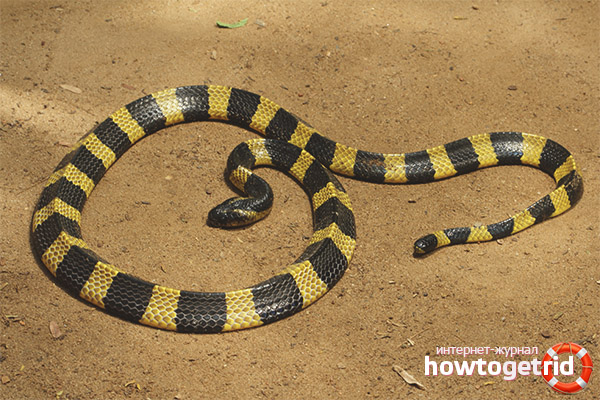
The breeding season begins in April and ends in July. 5-15 eggs are laid. During incubation (60-65 days) there should be heat with high humidity. A month later, young kraits hatch, weighing no more than 8 grams. The first molt begins 10 days later. Snakes grow quickly and after a few days are able to hunt small animals, and they develop poison.
Diet
The ribbon krate feeds on small snakes and lizards, bats, small amphibians and shrews.
Life in captivity
The maintenance and propagation of tape kraits in nurseries is a rather complicated process. This is due to the special danger of the snake because of its poison. In addition, the crater does not tolerate transportation, it experiences stress. Often, when the movement of the animal occurs in poor conditions, this affects the health of the snake. In zoos, tape kraot is rarely seen.
In order for the animal to feel good, it needs certain living conditions. The terrarium should be 60x50x80 cm in size. At the bottom, shavings are scattered, which must be regularly moistened. The best temperature is 27-29 degrees. Feed the yellow kraight with small snakes and mice. The snake has been living in the nursery for about 10 years.
Video: 10 poisonous snakes in the world


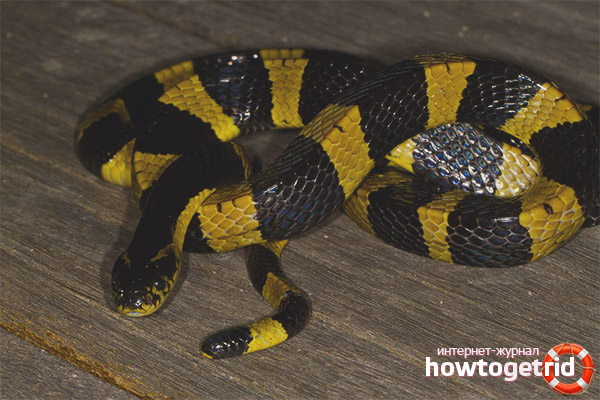

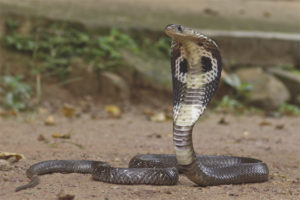
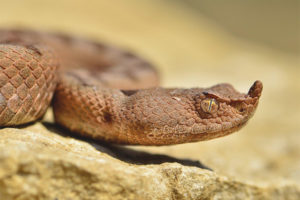
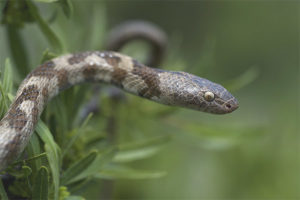
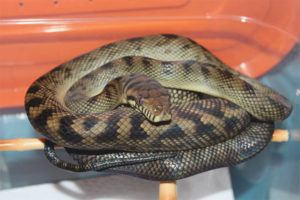

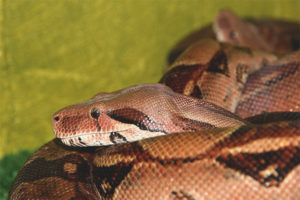
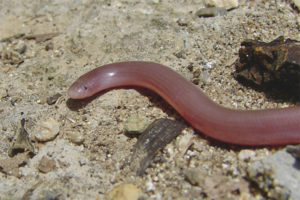
Submit